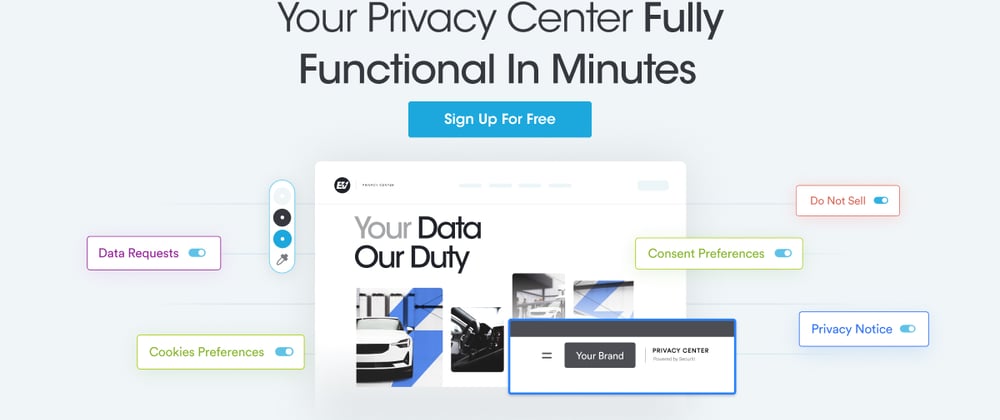Businesses need data since it leads to more opportunities, value, customer insights, innovation, etc. However, too much data also means too many responsibilities and obligations.
There are over 128 nations across the globe that have established data protection and privacy laws, while the rest are either in the draft or proposal phase. These regulations are established to ensure better transparency and give more control to consumers over their data.
In fact, every region may have varying obligations around consumers’ data privacy rights, cookies or consent preferences, and privacy notices. Managing all these obligations manually while using disparate tools can be challenging.
Organizations must opt for a more centralized approach to automate their privacy functions to reduce risk and build transparency and trust with their consumers.
Challenges Organizations Face Meeting Privacy Obligations
Privacy laws are evolving with time. Regulatory authorities often roll out guidelines that offer detailed insights into individual obligations. Due to the complexity and the ever-evolving nature of the obligations, organizations find it difficult to streamline privacy functions.
Privacy teams are burdened with disparate tools for individual purposes. For instance, there are dedicated solutions for consent and, similarly, for data subject request (DSR) fulfillment. Not only does each tool have a different learning curve, but each also has a separate data repository which ultimately creates silos within an organization.
A non-centralized approach to meeting privacy obligations also increases the chances of inefficiencies and inconsistencies. Since every tool has a different data repository and perimeters or metrics to define data value, users may experience inconsistencies with the resulting data across various tools.
Increasing overhead expenses is yet another challenge businesses face when using different tools for data privacy.
Centralized Privacy Center Experience
With a centralized approach, businesses can not only reduce their expenses but also overcome the challenges associated with the learning curve and the data inconsistency across teams. A centralized privacy portal can allow disparate teams to work together and collaborate on a single consolidated platform. Consequently, every team will be on the same page when meeting key privacy obligations like setting up privacy notices, consent preferences, cookies preferences, or data subject privacy rights fulfillment.
Securiti is a leader in the privacy management space that currently offers a seamless centralized privacy center experience with its Privacy Center. The Privacy Center is a lite platform that requires no credit card requirement and enables quick setup for users across the globe.
To get started, users must sign up for the Securiti Privacy Center solution and fill out the profile with all the right information. Once all the information is provided, the tool will use that information, and match it against the country or state and the applicable data privacy and protection laws to set up the privacy center experience.
Currently, the tool automates four major privacy functions, including the cookie and consent preferences, DSR, and privacy notices. By default, all these functions are available in an active state. It means users can immediately publish privacy notices and cookie banners across their website in a matter of seconds.
Users can also edit the modules' settings according to their business practices, obligations, or needs. Users can also customize the cookie banner experience according to their brand style guide to provide a seamless experience.
If you want to get access to this tool, please click here: https://securiti.ai/privacy-center/
Let’s discuss each of the four modules briefly.
- Privacy Notices
There are many purposes a privacy notice serves. For starters, it notifies customers about the business's data collection and processing practices, the purpose of collection or processing, retention period, customers’ privacy rights, etc. Privacy notices should be tailored according to the applicable laws and regulations. Securiti Privacy Center automatically generates privacy notices using the user's information about their business during the sign-up phase. Privacy Center further updates the notices using pre-built regulatory guidance and research. Users can also make changes to the privacy notice template accordingly.
- Cookie Preferences
A single website or mobile application may use a huge number of tracking applications for various purposes, such as business analytics, behavior analysis, etc. Customers have the right to opt-in or opt-out of the tracking cookies by law. Privacy Center’s cookie preferences module streamlines and automates the privacy function by detecting and tracking all the tracking cookies on a website and categorizing them.
- Consent Preferences
Data privacy and protection laws give customers the right to give or withdraw their consent against using their personal or sensitive personal data for marketing or any other purposes. Consent is even a lawful basis for data processing in many data privacy laws, which is why businesses in certain jurisdictions must obtain exclusive consent from the user before collecting or processing their data. The Privacy Center can automatically organize the consent collection process as well as its revocation. Moreover, it can also dynamically update the consent status across backend systems or applications.
- DSR Fulfillment
Every privacy law provides varying individual data privacy rights, such as the right to access data, request a change, or right to deletion. The Privacy Center enables businesses to set up quick DSR forms using pre-built customizable templates and organize all the requests in a single repository.
One of the beneficial aspects of a centralized privacy center is the ability to perform and automate various privacy functions from a single platform. Moreover, it removes organizational silos, enabling teams to work on the same page and streamline their processes for improved efficiency. With one solution for different purposes, teams don’t have to worry about facing the “learning curve” challenge that often arises while dealing with multiple tools for varying purposes, and of course, it also reduces operational costs.








Top comments (0)